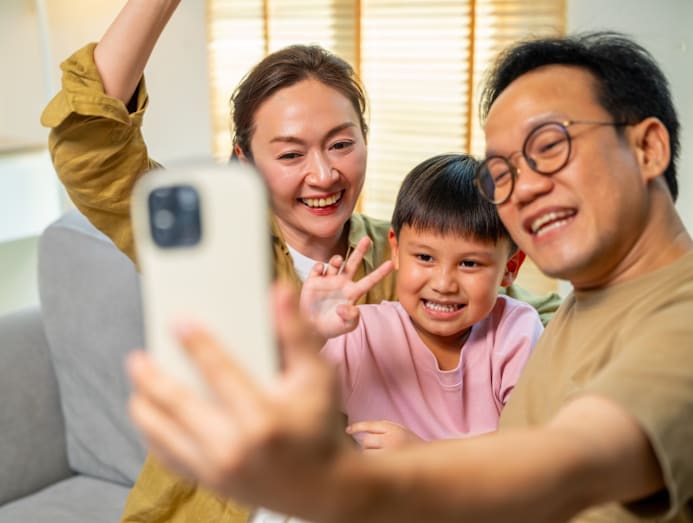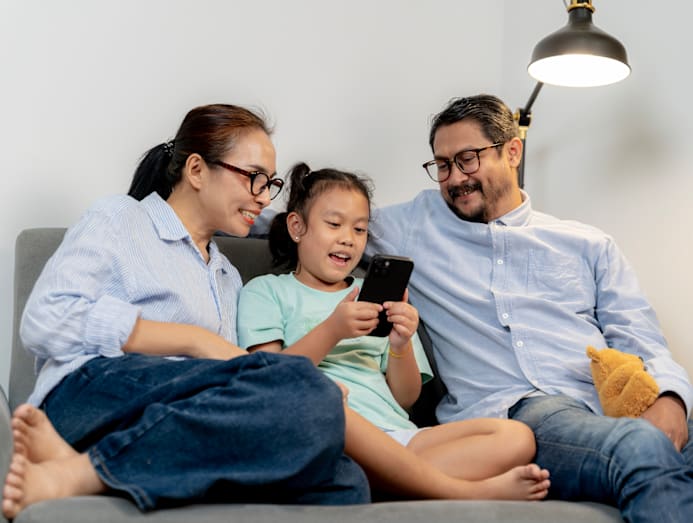Developer Offer
Try ImaginePro API with 50 Free Credits
Build and ship AI-powered visuals with Midjourney, Flux, and more — free credits refresh every month.
Parenting in the AI Era My Rules for Sharing Kids Photos
When my first son was just a month old, I posted his photo online. It felt like the most natural way to share my joy with the world. Even now, four years later, I find myself scrolling back to that picture on my social media feed, a digital scrapbook that’s easier to navigate than the thousands of photos on my phone. It’s a heartwarming way to capture and share memories.
However, in an age of artificial intelligence where any photo can be altered in seconds, I constantly question how much of our children’s lives should be public.

The dangers of the internet have led Ms Nabilah Awang to take precautions to protect her children's digital footprint. (Illustration: CNA/Samuel Woo, iStock)
The Double-Edged Sword of Social Media Parenting
Social media has completely changed the parenting experience. On one hand, it provides access to support groups, expert advice, and has normalized honest conversations about challenges like postpartum depression and burnout. It’s a powerful tool for connection.
On the other hand, it has created a culture of comparison. The curated highlight reels of influencer parents can make others feel inadequate or pressured to follow trends. I also see many parents who choose not to post their children at all, or who blur their faces to protect them from online harm and negative comments. I deeply respect this approach—the child's well-being must always come first.

How much of our children’s lives should we share online, asks the writer. (Photo: iStock)
My Personal Rules for Sharing with Intention
For me, posting updates isn't about showing off; it's about fostering connection. It allows family and friends living far away to feel involved in our lives, celebrating milestones with us. A dear friend in the Netherlands and I stay connected this way, sharing laughs over funny photos of our kids. It helps us remain a part of each other's daily lives despite the distance.
Still, the internet is not a guaranteed safe space. That's why I don't post indiscriminately. Here are the rules I follow:
- My Instagram is private. I cleaned out my follower list before my kids were born to ensure I was only sharing with people I truly know and trust.
- Only fully clothed and carefully chosen photos are posted. I never post anything that could embarrass them later, like tantrums or toilet training mishaps.
- No identifying information. I avoid using full names, addresses, or geotags that could reveal our routines or location.
This means that hilarious moments—like my son running around in just a Spider-Man mask during toilet training—are kept for our private family memories, not for the internet to immortalize.
Confronting the Gravest Fear AI and Digital Footprints
Even with these boundaries, I’m aware that my children have a digital footprint they never consented to. This is unsettling, especially when I consider that these posts could potentially be seen by a future employer, however slim the chance.
But my greatest fear is how easily children's photos can now be manipulated by AI. An article from Monash University on deepfakes and AI-generated exploitation highlighted a terrifying reality: even innocent images can be altered to create synthetic child sexual abuse material.

For the author, the risk of AI justifies her decision to limit or avoid posting her children’s images online. Today, she involves them in deciding whether to post an image online so they have control over what their digital footprint looks like. (Photo: iStock)
This evolving threat turns what seems like harmless sharing into a serious risk. For me, this risk alone is enough to justify limiting what I post. I want my children to have control over their own digital footprint.
A New Approach to Sharing
As my children get older (now three and four), I involve them in the decision. If they don’t like a photo, it doesn’t get posted. I’ve also stopped posting on any public platforms and vigilantly review my followers. These days, most pictures are shared only with a “close friends” list—people who are genuinely part of our lives.
I still choose to share updates about my kids because it helps us stay close to loved ones across the globe. But every photo is chosen with their privacy and dignity as the top priority. The funniest, messiest, and most precious moments? Those are reserved just for us, which, in the end, makes them even more special.
Nabilah Awang is an editor specialising in commodity insights. She is a mother of two.
Compare Plans & Pricing
Find the plan that matches your workload and unlock full access to ImaginePro.
| Plan | Price | Highlights |
|---|---|---|
| Standard | $8 / month |
|
| Premium | $20 / month |
|
Need custom terms? Talk to us to tailor credits, rate limits, or deployment options.
View All Pricing Details

